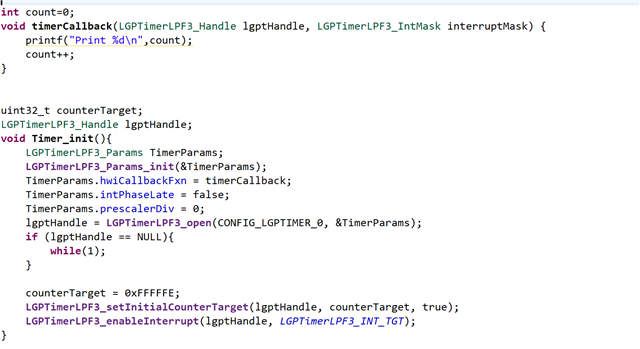Other Parts Discussed in Thread: ENERGYTRACE
How can I configure Timer in TI. Kindly provide me sample code for the same. I have tried with this code, but it's not working.

And also I have used the Energy Trace option in CCS. It shows 4 - 5 days Battery Life, I don't know whether it is showing right or wrong. Kindly confirm.

